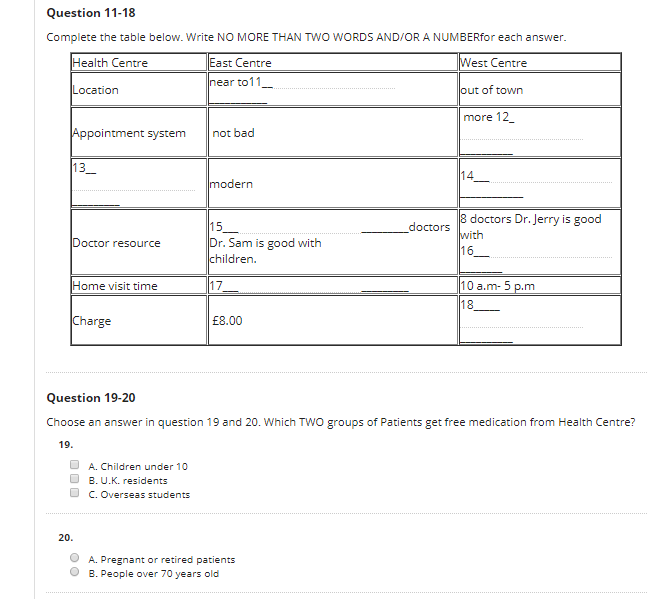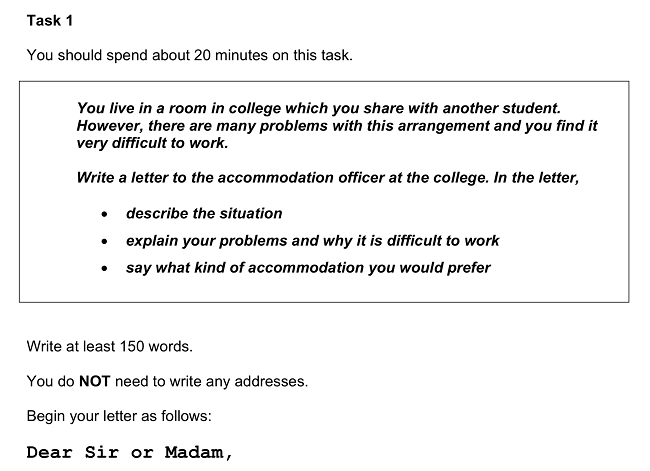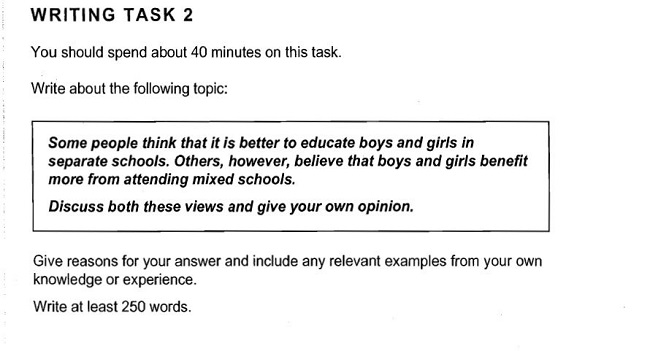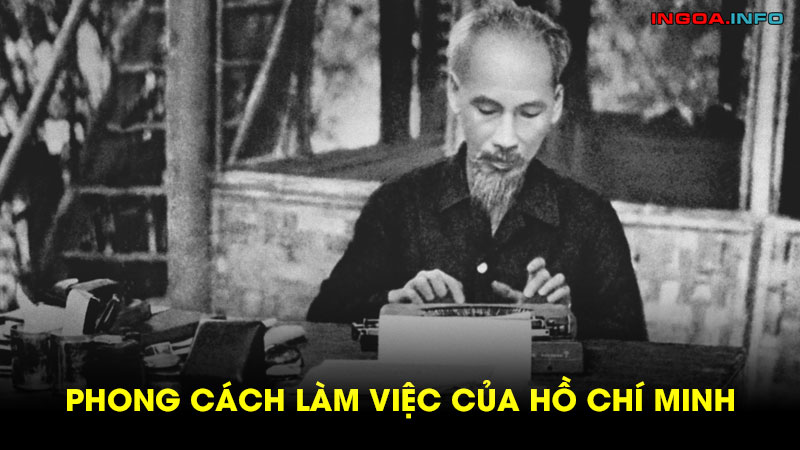Một trong những điều mà những ai mới tìm hiểu IELTS băn khoăn chính là IELTS Academic và General giống và khác nhau như thế nào? Nên chọn thi dạng bài nào phù hợp với mục tiêu của bản thân? Nếu đang cùng chung thắc mắc này, bài viết dưới đây là dành cho bạn.
Bài viết này sẽ nghiên cứu và phân tích đơn cử sự giống và khác nhau của IELTS General và Academic để những bạn có cái nhìn tổng thể và toàn diện rõ nét hơn, quyết định hành động lựa chọn sáng suốt .
Mục lục nội dung
I. Định nghĩa về IELTS Academic và General là gì?
IELTS là gì ? Là kỳ thi kiểm tra năng lượng tiếng Anh được công nhận trên toàn quốc tế, được phân loại thành hai loại là Hệ giảng dạy chung – General và hệ Academic – Học thuật. Mỗi mô hình dành cho những đối tượng người tiêu dùng khác nhau nên những bạn phải chú ý quan tâm để lựa chọn đúng mực khi muốn có chứng từ .
Thông qua phân tích sự khác và giống nhau của hai loại hình này, mình hy vọng, các bạn sẽ biết được nên chọn thi IELTS General hay Academic.
Trước hết là định nghĩa :
– IELTS Academic – Học Thuật: Là bài thi được dùng để đánh giá ứng viên có đủ tiêu chuẩn để học tập tại các trường Đại học và sau Đại học quốc tế giảng dạy bằng tiếng Anh.
– IELTS General (Hệ Đào tạo chung – Tổng Quát): Là bài thi công nhận năng lực tiếng Anh để cho ứng viên hoàn tất chương trình trung học, chường trình đào tạo, học nghề hoặc nhập cư, định cư ở các nước nói tiếng Anh.
II. So sánh IELTS Academic và IELTS General
ĐIỂM GIỐNG
Đều thuộc kỳ thi IELTS nên hai mô hình này đều giống nhau về :
1. Mục đích:
Dùng để kiểm tra năng lượng sử dụng tiếng Anh của người thi trải qua 4 kiến thức và kỹ năng Nghe – Nói – Đọc – Viết .
2. Cấu trúc bài thi:
Thời gian thi là gần 3 tiếng đồng hồ đeo tay. Trong đó :
– Nghe: 40 câu hỏi, 40 phút
– Đọc: 40 câu, 60 phút
– Viết: 2 bài luận, 60 phút
– Nói: 3 phần, 11-14 phút.
*** Trong đó, hai dạng bài đều giống nhau ở phần thi Nghe – Nói.
PHẦN THI LISTENING:
Ở phần này, bạn được nghe 4 bản ghi âm ( section ) của người nói tiếng Anh địa phương. Thời gian nghe 30 phút, 10 phút còn lại vấn đáp 40 câu hỏi có sẵn, những câu hỏi được phong cách thiết kế sao cho những câu vấn đáp Open theo thứ tự trong mỗi bản ghi âm :
– Section 1 : Cuộc trò chuyện giữa hai người ở trong ngữ cảnh xã hội hàng ngày .
– Section 2 : Màn độc thoại đặt trong ngữ cảnh xã hội hàng ngày. Ví dụ là một bài phát biểu về cơ sở địa phương, bài phát biểu nhậm chức …
– Section 3 : Cuộc trò chuyện ( tối đa 4 người ) đặt trong ngữ cảnh giáo dục – đào tạo và giảng dạy. Ví dụ : một thầy giáo và 1-2 học viên đang đàm đạo về một bài tập .
– Section 4 – Màn độc thoại chủ đề học thuật. Ví dụ : Bài giảng ĐH
Note: Bạn chỉ được nghe 1 lần. Giọng nói có thể là của người bản xứ từ Anh, Úc, New Zealand, Mỹ và Canada.
Các dạng câu hỏi thường gặp như : Multiple choice, Matching, Form / note / table / flow-chart / summary completion, Plan / map / diagram labelling, Sentence completion …
Các thí sinh được phát đề trước để kiểm tra, sau đó Nghe 30 phút ở đầu cuối vấn đáp trong 10 phút. Câu vấn đáp chấm đúng theo ngữ pháp và chính tả .
Mỗi câu hỏi có giá trị 1 điểm .
Ví dụ section 2 của bài thi Listening :

Các câu hỏi của bài thi IELTS Listening
PHẦN THI SPEAKING
Hình thức thi: Một giám khảo và một thí sinh sẽ có cuộc trao đổi phỏng vấn bằng miệng, có ghi âm lại.
Phần này có ba phần và mỗi phần có độ khó tăng dần, được dùng để kiểm tra khả năng Nói, giao tiếp, diễn tả…của người thi.
- Part 1: Giới thiệu và phỏng vấn ngắn
Phần này mở màn trình làng và kiểm tra thông tin cơ bản của người thi. Sau đó, họ nhu yếu những thí sinh kiểm tra những câu hỏi chung về một số ít chủ đề quen thuộc như nhà, mái ấm gia đình, việc làm, học tập và sở trường thích nghi. Để bảo vệ tính đồng điệu, những câu hỏi được dùng chung .
Phần 1 lê dài 4 – 5 phút .
Phần này sẽ kiểm tra năng lực tiếp xúc quan điểm và thông tin về những chủ đề hàng ngày và kinh nghiệm tay nghề hoặc trường hợp thường thì của người thi .
- Part 2: Phỏng vấn dài
Lần này, giám khảo sẽ đưa cho người thi một thẻ trách nhiệm với chủ đề đơn cử để người thi lý giải theo một góc nhìn của chủ đề theo mong ước. Các thí sinh được sẵn sàng chuẩn bị trong 1 phút với giấy và bút chì để ghi chép .
Bài nói thực diễn ra từ 1-2 phút và sau đó, giám khảo sẽ hỏi 1-2 câu hỏi khác cùng một chủ đề .
Để triển khai xong bài nói, thí sinh phải sẵn sàng chuẩn bị, tâm lý câu nói, cấu trúc bài … khác nhau .
Thời gian đơn cử : 3-4 phút gồm có thời hạn sẵn sàng chuẩn bị .
Phần này sẽ kiểm tra năng lực nói dài về một chủ đề đơn cử, tổ chức triển khai những sáng tạo độc đáo, ngôn từ, từ vựng … của thí sinh .
- Part 3: Thảo luận
Phần này, giám khảo và người thi cùng nhau thảo luận về các vấn đề liên quan đến chủ đề trong Phần 2 theo cách tổng quát hơn và trừu tượng hơn, sâu hơn.
Phần 3 kéo dài 4–5 phút.
Phần này sẽ kiểm tra năng lực tập trung chuyên sâu biểu lộ, chứng tỏ, hùng biện cho những quan điểm, nghiên cứu và phân tích, đàm đạo và suy đoán về những yếu tố của chủ đề .
Bài thi Speaking và tiêu chuẩn chấm điểm Speaking dựa theo 4 điểm mà những bạn hoàn toàn có thể theo dõi qua video sau .
3. Thời gian hiệu lực chứng chỉ: 2 năm.
IELTS ACADEMIC – IELTS GENERAL KHÁC NHAU NHƯ THẾ NÀO?
1. Cấu trúc bài thi
Cả hai mô hình thi IELTS đều có sự giống nhau về cấu trúc bài thi tuy nhiên, sự độc lạ nằm ở phần Đọc – Viết .
Cụ thể, những bạn theo dõi theo sự độc lạ của hai phần này như sau :
IELTS Reading Academic
Bài thi gồm 3 văn bản dài được viết theo nhiều kiểu khác nhau như tường thuật, diễn đạt, tranh luận … Các bài hoàn toàn có thể thêm sơ đồ, đồ thị, hình minh họa tương thích. Nếu có thuật ngữ kỹ thuật riêng thì sẽ có lý giải bằng bảng tuyển tập. Các bài này được lấy từ sách, tạp chí, tạp chí và báo chí truyền thông. Các bài đọc được sàng lọc riêng để dành cho người không chuyên nhưng muốn học cao hơn .
Các câu hỏi được sử dụng : multiple choice, identifying information, identifying the writer’s views / claims, matching information, matching headings, matching features, matching sentence endings, sentence completion, summary completion, note completion, table completion, flow-chart completion, diagram label completion and short-answer questions .
Câu vấn đáp chấm đúng theo ngữ pháp và chính tả. Mỗi câu hỏi có giá trị 1 điểm .
Ví dụ so với bài đọc Academic và câu hỏi :
|
WHAT DESTROYED THE CIVILISATION OF WASTER ISLAND? A When the Europeans arrived, Rapa Nui was grassland, with only a few scrawny trees. In the 1970s and 1980s, though, researchers found pollen preserved in lake sediments, which proved the island had been covered in lush palm forests for thousands of years. Only after the Polynesians arrived did those forests C Questions Question 14-20 Target 14. Paragraph A Characteristics List of Headings M. Diminishing food resources Question 21 – 24 Complete the summary below. Choose ONE WORD ONLY from the passage for each answer. Write your answers in boxes 21-24 on your answer sheet Jared Diamond’s View Diamond believes that the Polynesian settlers on Rapa Nui destroyed its forests, cutting down its trees for fuel and clearing land for 21 ___________ Twentiethcentury discoveries of pollen prove that Rapu Nui had once been covered in palm forests, which had turned into grassland by the time the Europeans arrived on the island.When the islanders were no longer able to build the 22 ________ they needed to go fishing, they began using the island‘s 23 ___________ as a food source, according to Diamond.Diamond also claims that the moai were built to show the power of the island‘s chieftains, and that the methods of transporting the statues needed not only a great number of people, but also a great deal of 24 ___ Questions 25 and 26 |
IELTS Reading General
Các bài được trích dẫn từ sách, sách, tạp chí, báo, thông tin, quảng cáo, sổ tay và hướng dẫn của công ty. Đây là những tài liệu bạn hoàn toàn có thể gặp phải hàng ngày trong thiên nhiên và môi trường nói tiếng Anh .
Có 3 phần, nhiều đoạn văn. Trong đó, phần 1 chứa 2-3 văn bản ngắn hoặc hơn. Phần 2 có hai văn bản, phần 3 sẽ là một văn bản dài .
- Phần 1: Các văn bản liên quan đến ngôn ngữ tiếng Anh cơ bản với thông tin thực tế chung như thông báo, quảng cáo và thời gian biểu.
- Phần 2: Tập trung vào chủ đề công việc: ví dụ, mô tả công việc, hợp đồng và phát triển nhân viên và tài liệu đào tạo.
- Phần 3: Các đoạn văn xuôi sử dụng cấu trúc phức tạp hơn, nhấn mạnh mô tả và mang tính hướng dẫn hơn tranh luận, liên quan đến xã hội. Các đoạn văn có thể lấy từ báo, tạp chí và các cuốn sách hư cấu và hư cấu.
Các dạng câu hỏi : multiple choice, identifying information, identifying writer’s views / claims, matching information, matching headings, matching features, matching sentence endings, sentence completion, summary completion, note completion, table completion, flow-chart completion, diagram label completion, short-answer questions .
Câu vấn đáp chấm đúng theo ngữ pháp và chính tả. Mỗi câu hỏi có giá trị 1 điểm .
|
READING PASSAGE 1 You should spend about 20 minutes on Questions 1-14, which are based on Reading Passage 1 below Want some great clothing ideas for your family? Our key for clothing specials in July : M for men, W for women, C for children For under $10 For under $25 For under $50 Or you can buy a gift voucher so that someone else can choose. Thes e come in USD 10, USD 20 and USD 50 amounts . Additional monthly specials for July to September Note: Postage and packing charges Within Australia: Overseas: New Book Releases A. This book describes the creativity of Aboriginal people living in the driest parts of nước Australia. Stunning reproductions of paintings, beautiful photography and informative text . Questions 1-7: Do the following statements agree with the information given in the text. In boxes 1-7 on your answer sheet, write TRUE – if the statement is true 1. Women’s cotton socks cost less than men’s . Questions 8-14: The list of New Book Releases on the following page has nine book descriptions A-I. Choose the correct title for each book from the list of book titles below. Write the correct number i-xi in boxes 8-14 on your answer sheet. List of Book Titles i. Field Guide to Native Birds of Australia 8. Book A – |
Writing Academic
2 phần với 2 câu hỏi
– Câu hỏi ( trách nhiệm ) 1 : Yêu cầu thí sinh miêu tả một số ít thông tin hình ảnh theo cách riêng. Thí sinh cần phải viết 150 từ trong khoảng chừng 20 phút. Thông tin hình ảnh hoàn toàn có thể là đồ thị, biểu đồ hoặc bảng để thí sinh miêu tả những sự kiện, số liệu tương quan. Hoặc đó là sơ đồ của một máy, thiết bị hoặc quy trình để người thi lý giải cách hoạt động giải trí .
Bạn hoàn toàn có thể tìm hiểu thêm chi tiết cụ thể về phần thi này qua video sau :
– Câu hỏi ( trách nhiệm 2 ), thí sinh viết bài biểu lộ quan điểm của mình với một quan điểm hoặc đối số hoặc yếu tố. Thí sinh cần viết 250 từ trong khoảng chừng 40 phút .
Trong IELTS Writing Task 2, những thí sinh được đưa ra một chủ đề để viết về một phong thái học thuật hoặc bán chính thức / trung lập .
Lưu ý : Khi làm bài, thí sinh cần viết đúng số từ tối thiểu nhu yếu trong thời hạn tương thích. Nếu viết ngắn hơn, người thi sẽ bị trừ điểm nhưng nếu viết quá dài thì sẽ khó kịp thời gian .
Note: Phần Task 2 có số điểm gấp đôi so với Task 1.
Dưới đây là tổng quan về phần thi Writing Task 2 Academic :
Writing General
Phần General, thí sinh cũng phải thi hai phần nhưng những câu hỏi tại mỗi Task có sự độc lạ so với dạng bài thi Academic .
– Câu hỏi trách nhiệm 1 : Người thi được nhu yếu viết câu vấn đáp cho một trường hợp, thông dụng nhất là viết một lá thư nhu yếu thông tin hoặc lý giải một trường hợp. Ví dụ : viết thư cho nhân viên cấp dưới nhà ở về yếu tố chỗ ở, viết thư cho gia chủ mới về những yếu tố quản trị thời hạn họ đang gặp phải, viết thư cho một tờ báo địa phương về kế hoạch tăng trưởng một trường bay địa phương, viết thư cho một cơ quan cho thuê để sắp xếp những yếu tố với mạng lưới hệ thống sưởi ấm trong nhà của họ .
Câu vấn đáp có tối thiểu 150 từ, viết ngắn hơn bị trừ điểm. Thực hiện trong 20 phút là đủ, nếu viết dài sẽ quá thời hạn để làm Task 2 .

Một đề thi IELTS Writing General Task 1
– Trong Task 2, những thí sinh viết một bài luận để đáp lại quan điểm, tranh luận hay yếu tố
Trong Writing Task 2, những thí sinh viết bài tiểu luận bán chính thống / trung lập của tối thiểu 250 từ. Chủ đê viết là những mối chăm sóc chung như mái ấm gia đình, liên hoan, văn hóa truyền thống, môi trường tự nhiên … Người thi phải nêu lên quan điểm và lý giải rõ theo nhu yếu đặt ra .

Một đề thi IELTS Writing General Task 2
Tiêu chí chấm điểm của hai dạng bài thi này đều giống nhau. Các bạn tham khảo tiêu chí chấm điểm IELTS Writing như sau:
2. Thời gian thi
Cụ thể thì, IELTS Academic có số lần thi nhiều hơn General theo lịch thi IDP và BC trong nhiều năm qua do nhu yếu thi cao hơn. Bạn hoàn toàn có thể xem cụ thể lịch thi với những tỉnh thành, khu vực tại đây .
3. Đề thi nào khó hơn?
Đề thi IELTS Academic có khó hơn so với General cũng do mục tiêu sàng lọc và kiểm tra ngôn từ tương thích theo tiêu chuẩn .
Như vậy, xét toàn diện và tổng thể, IELTS General và Academic giống nhau khá nhiều. Thế thì, nên chọn thi IELTS dạng nào ?
Nên chọn thi IELTS General hay Academic thì phù hợp?
Như đã nghiên cứu và phân tích điểm giống và độc lạ, những bạn hoàn toàn có thể nhận thấy, tiềm năng bạn thi IELTS là gì thì nên chọn mô hình đó .

Đối với những bạn có mong ước du học, học tập ở quốc tế thì bắt buộc thi IELTS Academic còn nếu chỉ để tiếp xúc thao tác đơn thuần hơn thì bạn chọn General .
Một thông tin khác là khi có bằng Academic thì bạn sẽ không cần thi bằng General do đó, tùy thuộc tiềm năng mà bạn hoàn toàn có thể lựa chọn tương thích .
Tuy nhiên, đừng cố quá theo đuổi bằng Academic bởi đề thi mô hình này thường nghiêng về học thuật hơn do đó, ôn luyện cần chú tâm hơn .
Đăng ký thi thử IELTS MIỄN PHÍ
Như vậy, mình đã trình làng sơ lược và nghiên cứu và phân tích về hai dạng bài thi IELTS. Chúc những bạn đạt được điểm số cao nhé !
Nguồn ví dụ : Cambridge IELTS và IELTS trực tuyến Test
IELTS Fighter san sẻ
Source: https://blogchiase247.net
Category: Hỏi Đáp






